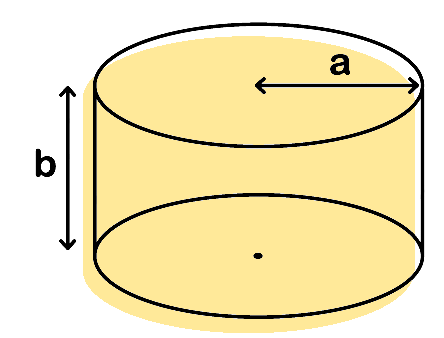
Keeping students engaged and excited about math class can be a tall order. However, with the many advances in technology, it is much easier to make math lessons fun. In addition, technology can also make the math teacher’s job a lot easier by providing pre-made activities, options for differentiating and even helping with pre- and post- assessments (including grading!).
The following is a list of different resources to help both new and veteran teachers make math class a whole lot more fun for students. Best of all, most of these resources are free! You should find materials that can be printed, ideas for activities to use in your classroom and even blogs with tips from teachers around the country to help you build your perfect learning environment.
Materials
- White Boards. For those of you on a budget, you can make personal student white boards just by laminating cardstock. A dry-erase marker and a piece of tissue is a great way to get students more involved in the classroom while also allowing teachers to assess student learning throughout the class period. There is no easier way of determining if your students are getting the main concepts from the lesson than being able to see their work on their own white boards. If you have a little more money in the budget, you can get a sturdier white board at your local home improvement store. Ask for “white panel board.” Most home improvement centers will even cut larger sheets into smaller pieces for you. You will leave with a class set of white boards for less than $50.
- Interactive White Boards. Some of you might know these interactive white boards as “promethean boards” or “smart boards.” These are the next step up from the old-school overhead projectors. Best of all, you will no longer need transparencies! You can connect the white board to a computer and share documents, websites and even play games. With a large touch screen, students will be excited to come up to the white board to help complete notes, do examples or take part in one of the many interactive games and demonstrations that can be used.
- Tablets. A tablet can act as a personalized interactive white board. Instead of one large white board on the wall for the whole class to use, each student can have a touch screen right in the palm of his or her hands. The best feature of tablets is that they allow for customized learning. Ever wondered how you could possibly differentiate your lessons for all the different types of learners in your class? Tablets are the way to go. Students can work at a pace that suits them, and still be learning.
- Clickers. Clickers allow every student to feel like he or she is on a game show. Clickers, when used wisely, can keep students engaged during a lesson, help promote discussion and also give the teacher instant feedback on student comprehension.
- Graphing Calculators. The graphing calculator has come a long way. Some calculators can now be connected to the teacher’s calculator, the interactive white board, the computer or other technology. The graphing calculator can give students an amazing tool for seeing math come to life. Many models can also work as clickers.
- Printable Stuff. A teacher’s time is a precious commodity, and saving time on the little things is critical when teaching. The Cornerstone offers many free items that can be printed directly from the website, including customizable flash cards, awards and even specialized forms for just about any school occasion. You will not have to recreate the wheel; instead, just print what you need.
- Practice Drills. Sometimes students need practice to become fluent in their math skills. Practice drills, or “mad minutes,” can be a quick and easy way to provide students with the practice they need. You can design your own practice drills, or if you’d like to save time, simply print some of these pre-made items.
- You can find tons of drills already made at Math-Drills.com.
- Donna Young also has pre-made practice sheets on her website as well.
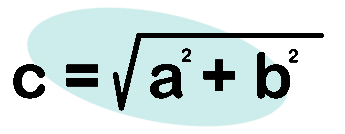
Manipulatives
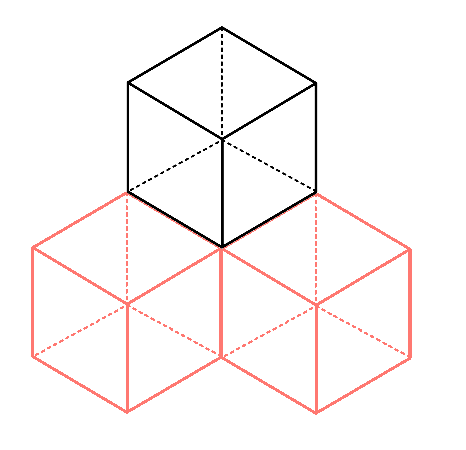 Manipulatives make learning mathematical concepts fun and engaging for students. However, buying supplies for the classroom can get expensive, and you can’t always expect to be reimbursed. Therefore, you may want to create some of the manipulatives yourself. Instead of spending time trying to get everything formatted correctly, you can visit one of the many free websites offering pre-made math goodies and have them ready to print for your use!
Manipulatives make learning mathematical concepts fun and engaging for students. However, buying supplies for the classroom can get expensive, and you can’t always expect to be reimbursed. Therefore, you may want to create some of the manipulatives yourself. Instead of spending time trying to get everything formatted correctly, you can visit one of the many free websites offering pre-made math goodies and have them ready to print for your use!
- Black Line Masters offers a wide-range of printable tools and resources geared towards students in pre-K through ninth grade. Check it out, and see what you can use in your classroom. Bookmark it for later so you can go back and print more as your needs change.
- SEN Teacher has a page of printable items mostly geared towards the elementary level, including clocks, polygons and even coins. These items look even better when printed in color. Be sure to print on card stock and laminate the items so that they last longer.
- IAmHomeschooling.com also offers plenty of ready-made manipulatives and other tools. From pre-K to high school, there are items for students at every level. You can print algebra tiles, Cuisenaire style rods or fraction circles. These are also colorful and can be used over and over if printed on thick card stock and laminated
- Craig Loewen of Lethbridge University has a small batch of excellent resources for students in higher level classes, including tangrams and geoboards. These tools have tons of possible uses to enhance your math lessons!
Lessons and Videos
- Khan Academy is completely free and offers an excellent library of videos presenting complex math topics in a way that is easy to comprehend. There are also practice questions that can be used in conjunction with the videos.
- Saylor University is branching out with brand new, fully-loaded courses for grades K–12. Many courses included assessments, lessons, videos and discussion questions. New courses aligned to the Common Core standards will also be added. For those students looking for a challenge, there is a whole line of open college courses, too.
- Want to make your own online textbook for free? Need a lesson plan? Then CK-12 Foundation has what you need! From single lessons to entire courses, CK-12 has it all. Many of the lessons are connected to the Common Core standards as well.
- Discovery Education offers a wide-range of new and interesting pre-made lesson plans for you to use. Be sure to check back as new materials are updated. To quick access to materials for the level you are teaching, simply click on K–5, 6–8, or 9–12.
- The National Council of Teachers of Mathematics believes math lessons should be more than just “drill and kill!” They’ve put together an excellent compilation of lesson plans and activities. These are free and geared towards many different levels. Be sure to click on your grade level to maximize your search results.
- PBS Learning Media offers an eclectic library of activities and is a great place to find videos or ideas to spice up your lessons. There is a section specifically for K–8, and a section for each of the high school topics. This resource is free, but you may be asked to set up an account.
- Cynthia Lanius from Rice University has created this site featuring a broad collection of math lessons that are sure to be “fun, fun, fun!” The lessons are scattered about the page, but you can click on any of the links to get to the actual details. Many involve real-life scenarios and ideas to really get students thinking. These lessons are suitable for upper elementary and middle school students.
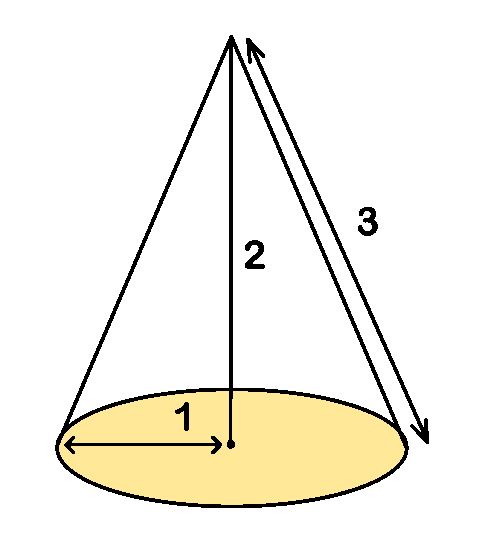
- K-5 Teaching Resources is an especially great website, and could really be placed under every category in this article. Not only are there lessons, practice tasks, math vocabulary practice ideas and math projects, but you’ll also find games and printable items and just about anything else you could need for teaching grades K through 5. By clicking on the links to the different grade levels within the site, you will even be given lists of books that you can use to incorporate literature and language arts into your math lessons.
- Learn Zillion is a great place to visit if you’re looking to boost classroom discussions with videos and lessons that explain math topics in an easy-to-understand and engaging way. The site offers fun and educational content appropriate for all levels of students. You can use the videos to start a lesson and introduce new ideas, or you can use them to help students draw conclusions and bring it all together.
- Who says math can’t be fun? With Mathalicious, spicing up middle school and high school math lessons just got a whole lot easier. These amazing collections of lessons will not only get your students thinking and problem solving, but they will have fun while doing it! The lessons are typically geared towards using math in real-life applications, which really helps students see the importance of learning and understating math.
- Have you ever heard of the Three Act Math Task? Dan Meyer’s has put together some ingenious ideas for changing the way we teach middle and high school math. What’s even better, these great ideas are available in a Google spreadsheet, which means anyone can apply them in the classroom. Some of the lessons include videos and data that can be a great starting point for enhancing your lesson, even if you don’t follow the three acts.
- Shodor is a great resource for students to see math in action. This interactive website has already designed a plethora of fantastic math activities to help students see math at work. The geometry and probability sections are especially helpful!
Online Games
- Mr. Nussbaum is geared towards students in grades pre-K–5. The games are free, entertaining and engaging. Many of the games can be played on iPads and iPhones as well.
- Math is Fun is a free website offering mini explanations of math topics from all levels, including elementary to high school. It also features tons of games and puzzles to explore.
- Sheppard Software is a great resource for teachers looking for new ways to differentiate. The games offered on this site have many levels, so no matter what stage your student is at, he or she can still practice and have fun! The games are geared towards elementary and middle school students.
- Soft Schools has it all, from counting to AP statistics. There are tons of games, worksheets and even online quizzes to help students stay engaged in math.
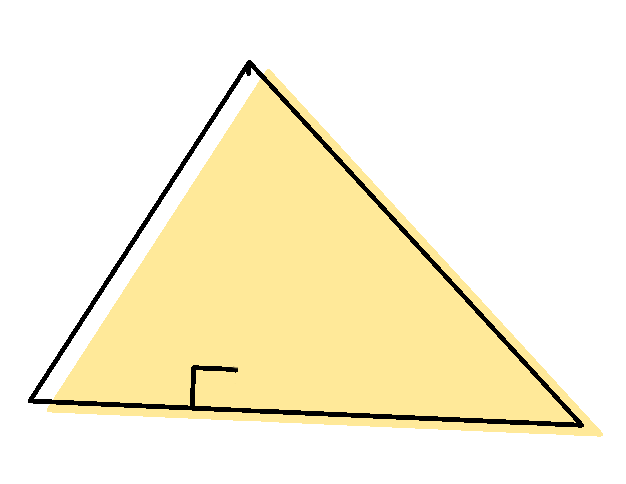
- Cool Math offers a broad collection of free games for a range of age levels. There’s also a special section for 3- to 5-year-old students, and you will even find a special section for pre-calculus. Be sure to check out the lessons and activities, too.
- Math Playground features games for students that are used to playing video games on consoles, such as Xbox, PlayStation or Nintendo DS. The graphics are great for math games, and most are made for elementary and early middle school students. You will also find a link to great iPad apps that give your brain a workout, and many math manipulatives that would be great for use with an interactive white board.
- Math Blaster contains a selection of free games with an option to purchase a membership for access to lessons, additional games and other features. There is also a special section for teachers. Games specifically focus on skills for grades pre-K–6.
Math Activities
- Hands on Math Activities was put together by Wendy Sawatzky. Activities are divided up into categories, and each category includes a basic summary of the activities included and an explanation of any extra materials you might need to carry them out.
- Education.com has an interesting selection of activities that will keep students motivated about learning. There’s a ton of fun and educational activities that will help keep students engaged in the learning process, including projects like using math skills to make toothpaste or making collages of cityscapes using geometric shapes.
- Activity Village has an assortment of games using dice! Students will enjoy this site because they will feel like they are playing a game, but they’re also learning math, too! Dice are usually available at dollar or discount stores and can be an inexpensive way to spice up the classroom.
- Crewton Ramone’s House of Math shares some interesting ways of changing up card games in order to help promote math skills. There are so many ways to change up the games so that differentiation becomes a little easier while still allowing everyone a chance to play.
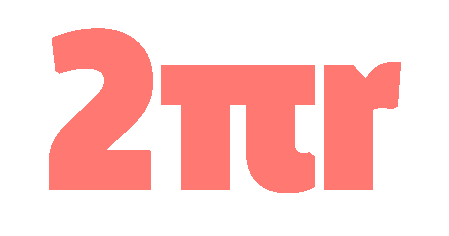
- Teach Mama has three absolutely wonderful ideas for games that are easy to make, easy to play and a fun way to learn or practice math skills. These activities are most appropriate for elementary level students.
- Homeschooling Hearts and Minds shares a simple way to help students practice place value and other math concepts through the use of an abacus. When students ask why they can’t use a calculator in your class, you can tell them to use their abacus!
- Education.com has yet another gem. They have put together a nice group of activities specifically for middle school students. The activities are fun and are a perfect way to spice up lessons.
- Hands on Math is a blog with a lot of great ideas to make math more engaging and fun. You may have to sift through some of the other posts, but in between are excellent ideas for teaching math and getting students thinking. There is even talk of using playdough to help students learn. Who doesn’t love playdough?
- Cut the Knot features almost 1500 different activities to make learning math more exciting. Activities are organized into categories to help you quickly find what you are looking to teach. Many of the activities would be suitable to the high school crowd.
- Science Buddies has a list of projects suitable for science fairs, but they also include ideas for math. The projects are organized into three difficulty levels. You can use these ideas to create class projects.
- Many games can be switched around to fit the topic you are teaching. The difficult part is coming up with enough inventive ways to keep children excited to play. Multiplication.com has a comprehensive list of math games that are easy to play. There’s also a guide for each game that explains how to use the games and how easy or difficult they may be for students.
- David Gardner has put together 17 pages worth of games designed for primary school students. Again, some of these games can be adapted for use in lessons other than the ones mentioned on the site. In addition, many of the games require little-to-no cost or preparation.
Common Core
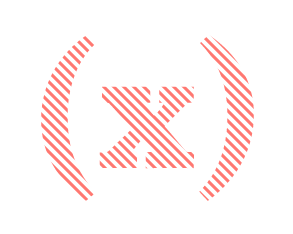 Making sense of the rigorous Common Core standards can be tough. However, there are tons of resources out there to help you create the best lessons in accordance with the new standards. The following compilation of resources includes activities, lessons, unit plans and even practice assessment questions to help you best prepare your students for success.
Making sense of the rigorous Common Core standards can be tough. However, there are tons of resources out there to help you create the best lessons in accordance with the new standards. The following compilation of resources includes activities, lessons, unit plans and even practice assessment questions to help you best prepare your students for success.
- The Common Core Toolbox separates the mathematical practice standards from the mathematical content standards. This website helps ensure that you are incorporating both sets of standards in your classroom. There is also a link to resources to help you implement the standards in your classroom.
- Sometimes you just need to talk to another teacher to get an inside look at what works, what doesn’t and where to go next as you grow as a teacher. Inside Mathematics has many videos to help you along your way. In addition, there are monthly math problems and tasks and assessments that are aligned to the Common Core standards.
- EngageNY has an excellent source of unit plans, which they call “modules” for grades K through 12. Each module has lessons, a mid-module assessment and an end-of-module assessment. Plus, the writers have provided teacher and student materials, giving teachers examples of discussions that could take place in the classroom to help students build their mathematical understanding.
- The Teaching Channel offers a huge selection of videos for teachers. You can see classrooms in action or listen to experts discuss important educational ideas. The videos are fairly short, so you can gain knowledge without giving up your entire lunch break!
- The New York City Department of Education also has an extensive library of materials to help you work with the Common Core standards. The information is separated according to grade level: elementary, middle school and high school. Click on a grade level and you’ll be taken to a new page filled with links to helpful materials.
- This website from the North Carolina Department of Public Instruction unpacks the Common Core standards and provides examples of questions and discussions to quickly show what each standard might look like in the classroom. These grade level guides are a quick and easy way to get a sense of what content is taught at each level and how to start making each standard come to life in your classroom. These can be a great go-to resource when you are just getting started.
- If you are willing to spend a little, Teach Thought has a list of 50 resources on the Common Core standards. Not all of the links will cost money, and some even offer a 30-day free subscription to try them out and see if the information is helpful. This site also includes many professional development opportunities to help you continue to learn and grow as a teacher.
- Achieve the Core actually wants you to steal the stuff off of their site. Seriously! It says so on their home page! This non-profit organization has tasks, assessments, lessons and more to help your students achieve success.
- Finding open resources that you can use for free can be tough. Edutopia has put together five resources for elementary teachers that are considered “open resources.” This means you can freely use them as often as you like. The copyright license also allows you to make changes to the materials to fit your classroom needs.
- You may want to check out the Mathematics Assessment Project. Not only does this website feature practice assessment tasks, but it also includes links to professional development and classroom challenges. This is an excellent resource to use when you have your lessons and units planned but need help assessing whether students have learned the material.
- For even more assessment resources, check out the Smarter Balanced Assessment Consortium. Here you will find practice assessment questions with explanations and links to information to information about the Common Core standards.
- Partnership for Assessment of Readiness for College and Careers (PARCC) offers practice tests for students to practice for Common Core assessments. PARCC is creating new materials, and they will be adding more to the site over the next few years in order to continue to help teachers implement the Common Core standards.
Learning Math at Home
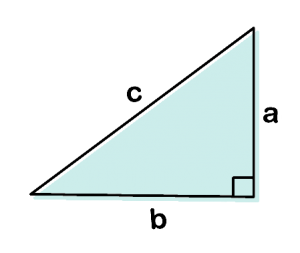 Getting support from families really helps build a relationship between home and school; it also helps students learn and retain information. It is important to keep families informed about the happenings in your classroom. Moreover, parents are often interested in knowing what their children are learning in school. The followings websites include tips and tools that you can share with parents to help them get involved in their child’s math education.
Getting support from families really helps build a relationship between home and school; it also helps students learn and retain information. It is important to keep families informed about the happenings in your classroom. Moreover, parents are often interested in knowing what their children are learning in school. The followings websites include tips and tools that you can share with parents to help them get involved in their child’s math education.
- The National Council of Teachers of Mathematics has a special section geared towards families. They offer tips for helping with math homework and problems for families to solve together.
- The US Department of Education has put together many activities to help build mathematics into everyday life. Helping students and families see the importance of math and how it can be used everywhere is an important step in getting everyone on board for learning! These activities also make math seem fun and interesting when done together as a family.
- Here are some ideas on how families can help with math homework from Great Schools. This is another link that you might want to post to your teacher website or email to parents at the beginning of the year. There are also tips to help parents know where to start when trying to work through a difficult homework assignment.
- For the elementary levels, Everyday Mathematics has some helpful guidance for parents to help their child(ren) build number sense and become better prepared for higher level math.
- EngageNY has put together resources to help families as the Common Core standards are implemented. This is an excellent resource to share with parents of the school where you teach is using the modules created for Common Core.
Ideas for Over the Summer
- For grades 1 through 5, there are summer themed math worksheets at Kid Zone . You can share the links with families or print them out and make a packet for students to work on over the summer break.
- Family Education has some excellent ideas for activities that students can do over the summer that involve math.
Here are a few others:
Math Contests and Competitions
- Moody’s Mega Math Challenge offers $20,000 to the winning team each year. Three to five students in 11th or 12th grade work with one teacher to solve a “mega problem.” The problems may not seem like math problems at first, but the math is an important part of the solution.
- Mathcounts has a Math Video Challenge. Students make a video showing a math problem and its real life applications. Students get a chance to mix their math skills with the technology. In the end, teachers have an archive of videos that
 answer the age old question, “When are we going to use this?”
answer the age old question, “When are we going to use this?” - The Mathematical Association of America offers the AMC 10/12 test for high school students. It is a multiple choice test with questions ranging from really easy to truly challenging! There is also an AMC 8 for students at the middle school level. If a student happens to do well on the AMC 10/12 he or she could be invited to take part in the United States of America Mathematical Olympiad. Yes, it is basically the Olympics for Mathematics!
- If organizing a group of students to travel for a competition seems impractical or too difficult, you can also take part in the National Internet Math Olympiad. The contests are monthly and seasonal, so be sure to check the website often. There is also a Junior Online Math Olympiad) for lower level students to check out.
- The Mathematical Association holds the Primary Math Challenge, a competition specifically designed for elementary students. The competition takes place in November, and students that do really well will be asked to take part in a bonus round in February.
- The University of Alabama offers a Math by Mail contest. There is no traveling required, and there are cash prizes to be won! The entire contest is done through the mail.
- Here is yet another contest for elementary students. Over at Noetic Learning, students can take part in a contest where they will have 45 minutes to answer 20 questions. The top students will earn a medal, and the top 50% will have their names placed on the Noetic Learning website.
- The Art of Problem Solving has a great list of competitions categorized by state so that you can find even more way to challenge your students. There are other national competitions listed above as well.
Blogs
- For the Love of Teaching Math is not only cute, but it’s also home to some really great ideas. Sometimes you just need to see how other teachers are doing it, and this blog provides a chance to see a bit of what goes on in another math teacher’s brain.
- Reflections of a High School Math Teacher offers a great discussion of mathematics in real-world application. Each post is a true mathematical look at real life, and the applications tend to differ from what you find elsewhere.
- Dividing by Zero is great for middle school math teachers looking for a blog that is focused on math and the classroom. This savvy blogger shares the triumphs and struggles of teaching middle school math and describes the different activities she has tried while teaching.
- Mr. Andrew Stadel writes at Divisible by 3. This blog features a mix of all different types of posts. Many teachers, old and new, will find the discussions worth reading. Mr. Stadel offers a look at different activities he is working on for the 3 Act lessons, and he even discusses assessments. professional development and trainings.
- I Speak Math has put together a master list of the many great middle school math blogs currently out there.
- Walking in Mathland is a great place to go to find out what other teachers think about an activity they have tried before you try it yourself.
- Over at dy/dan, Dan Meyer writes about math education, what is wrong with it and how it can be made better. He writes about the three act lessons that he has put together, professional development opportunities he has taken part in and even other proposed learning models. He thinks deeply about each topic and has a fun way with words that make his articles enjoyable to read.
